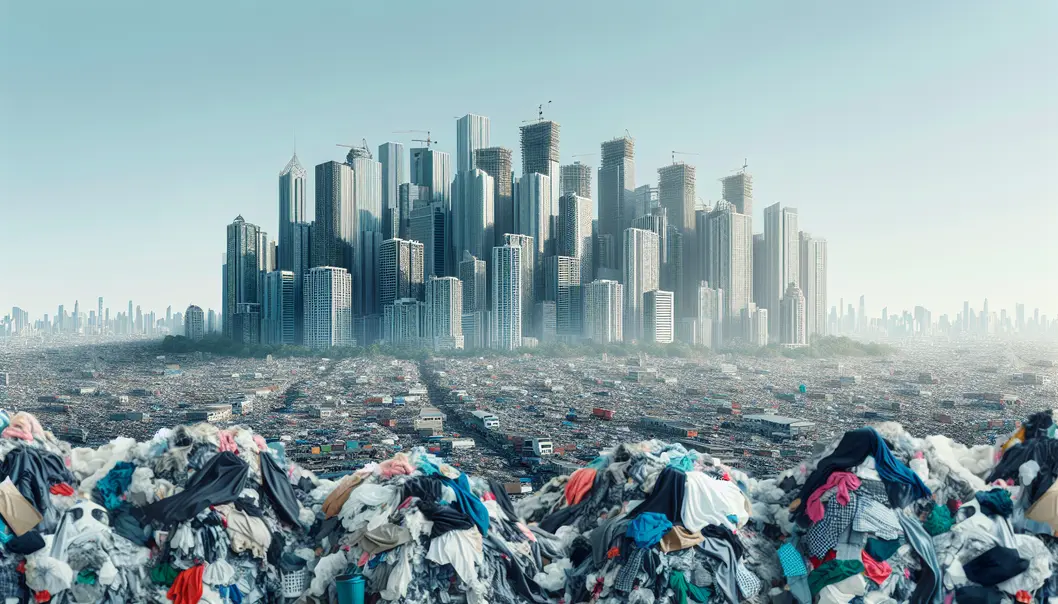Sustainable fashion is more than a trend; it’s a movement towards a more conscious and environmentally-friendly approach to clothing. With the rising demand for transparency and ethical practices, consumers are increasingly turning to brands that prioritize sustainability. This shift is reshaping the fashion industry, driving changes from the ground up—including how clothes are designed, produced, and consumed. Environmentally conscious shoppers are not just buying clothes; they are making a statement and promoting a philosophy that values human rights, animal welfare, and environmental conservation.
Understanding the True Cost of Fast Fashion

Fast fashion refers to a modern business model characterized by the rapid production of inexpensive clothing, often replicating current runway trends at a fraction of the cost. This model has entrenched itself as an industry standard, offering consumers updated styles regularly. However, the consequences of fast fashion extend far beyond enticing price tags and trendy aesthetics, shadowing the industry with considerable environmental and ethical dilemmas.
The environmental toll of fast fashion is significant. Cheap production methods often mean cutting corners on sustainability. Consider the carbon footprint: the fashion industry accounts for approximately 10% of global carbon emissions, surpassing even international flights and shipping combined. Textile production involves energy-intensive processes that release greenhouse gases, contributing heavily to climate change.
Water usage poses another urgent concern. It is estimated that it takes about 2,700 liters of water to produce just one cotton T-shirt. To put this into perspective, that amount could meet the drinking needs of one person for two and a half years. As fast fashion giants demand quick and massive production, water bodies are polluted from the chemical run-offs of dyeing and printing processes. These chemicals cause severe ecological damage, affecting both marine life and human communities relying on these water sources.
Moreover, the industry’s insatiable appetite for synthetic materials like polyester, derived from fossil fuels, exacerbates plastic pollution. Polyester accounts for about 60% of clothing worldwide. When washed, these fabrics release millions of plastic microfibers into water systems, which infiltrate our food chain and have been found in human organs.
The social costs of fast fashion cannot be overlooked. Many manufacturers operate in countries with weak labor laws. Garment workers often endure dangerous working conditions, with exploitative wages and grueling hours. The infamous Rana Plaza collapse in 2013 highlighted this dark underbelly, where over 1,000 workers lost their lives due to the building’s unsafe conditions.
In addition to the humanitarian crises, rapidly changing trends lead to ever-growing clothing waste. The continuous churn of new collections encourages disposability over durability. In the United States alone, more than 11 million tons of textile waste end up in landfills every year. Globally, an estimated 92 million tons of textile waste are discarded annually, a symptom of the throwaway culture fostered by fast fashion.
Education and awareness amongst consumers are vital in mitigating these impacts. Shoppers need to recognize the difference their choices make. Brands are beginning to respond to consumer demand for sustainability by adopting more eco-friendly practices, but the power lies significantly in informed consumer behavior. Knowledge empowers individuals to question brand ethics, choose quality over quantity, and understand that every garment has a story beyond its price tag.
While consumers crave the allure of swift style changes, they must balance this desire with conscientiousness. By realizing the full scope of their purchase decisions, consumers can foster a movement that values longevity, ethics, and environmental stewardship in clothing production. Such awareness can spearhead a shift in the fashion industry towards sustainable practices, ensuring a better future for our planet and its people.
Embracing Eco-Friendly Fashion: Practical Steps for Consumers

Shifting towards sustainable fashion involves making thoughtful, informed decisions. It starts with understanding the impact of our clothing choices and making deliberate changes. Here are practical steps consumers can take to embrace eco-friendly fashion.
Begin by researching brands committed to sustainability. Look for those with certifications that ensure ethical and sustainable practices, such as Fair Trade, Global Organic Textile Standard (GOTS), and OEKO-TEX. These certifications indicate that a brand is committed to minimizing its environmental impact and ensuring fair labor practices. Investigating a brand’s sustainability reports or mission statements can also provide insight into its values and practices.
Second-hand shopping is an excellent way to support sustainable fashion. Thrift stores, consignment shops, and online marketplaces offer a wide range of styles and brands at reduced costs while reducing the demand for new production. Buying second-hand not only cuts down on waste but also reduces the carbon footprint associated with manufacturing new garments. If you’re looking for something specific or high-quality, consider vintage shops or curated online platforms.
For those less inclined to buy, renting clothing offers a creative alternative. Many services provide rental options for special occasions, office wear, or even casual outings. Renting reduces the need for continual consumption and allows for experimenting with different styles without the long-term commitment.
Supporting local artisans and small businesses can further contribute to a sustainable wardrobe. Often, these businesses focus on handmade, locally sourced materials and ethical labor practices. Buying items that support the local economy also ensures a unique addition to your wardrobe, enhancing personal style with distinctive pieces.
The concept of a capsule wardrobe is pivotal in reducing clothing consumption. By curating a collection of versatile, high-quality essentials, consumers can mix and match pieces to create multiple outfits without the need for excessive quantities of clothing. Essential items should be classic, easily layered, and tailored to individual preferences. This minimizes impulse buying and extends the life of well-loved pieces.
Caring for your clothing properly is another step toward sustainability. Simple actions such as washing clothes on cold settings can reduce the energy used and lessen wear and tear. Air drying instead of using a dryer preserves fabric integrity and reduces energy use. Learning basic repair skills can prolong the life of well-worn pieces, keeping them in good rotation instead of relegating them to the trash.
These steps not only contribute to a more sustainable fashion industry, but they also allow individuals to maintain their personal style without compromise. By favoring quality over quantity and making conscientious choices, consumers can significantly reduce their environmental footprint and promote ethical labor standards. Such changes in consumer behavior can ripple through the industry, encouraging brands to shift towards more sustainable practices in response to informed consumer demand.
Final words
Sustainable fashion isn’t just about buying clothes; it’s a holistic approach to consumption that considers the planet and future generations. By making conscious choices, consumers can drive significant changes within the fashion industry, demanding greater accountability and care from brands. Each sustainable choice contributes to a global movement for a healthier planet.

